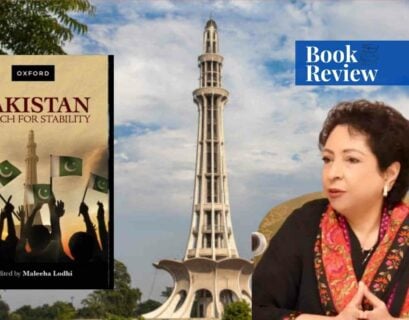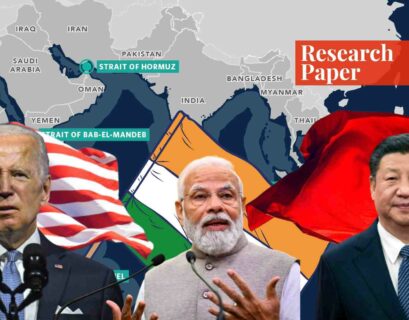Adam Abass is an undergraduate student of political science and international relations. His research focuses on Middle Eastern politics, counter-terrorism, peace, and security in Africa.
What is R2P?
The inability of the international community to respond to the horrific crimes against humanity committed in the 1990s in Rwanda and the Balkans forced the adoption of the Responsibility to Protect (R2P) doctrine in order to safeguard the human population by allowing humanitarian intervention.
The R2P doctrine, which serves as the framework for humanitarian intervention, was created by the International Commission on Intervention and State Sovereignty (ICSIS) in 2001 and was formally adopted by the United Nations General Assembly in 2005 with the support of 191 states. The doctrine’s three pillars are regarded as its cornerstones. The first pillar recognizes that states have a duty to protect their civilian population against the four mass atrocities of genocide, war crimes, crimes against humanity, and ethnic cleansing.
The second pillar asserts that the international community has a responsibility to help the state fulfill the obligation of the doctrine, while the third pillar states that if the state fails to protect its civilian population from mass atrocities, the international community must be ready to take appropriate and collective action to protect the civilian population whose lives are at risk.
In order for the international community to correctly respond to the principles, a suitable diplomatic, humanitarian, pacific, or coercive solution must be adopted in order to safeguard the human population, with military involvement as the sole and absolute last alternative. The R2P doctrine has been used in dozens of nations, including Yemen, Somalia, the Democratic Republic of the Congo, Libya, and many others.
In such instances, where the safety of civilians is at risk, the international community can only intervene militarily with the approval of the UN Security Council. Yet, some powerful states in the international system have abused the authority granted to the international community to respond to crises where human lives are at risk by impermissibly interfering in that state’s internal affairs and violating its sovereignty, all in the name of safeguarding civilians.
R2P and Iraq
The United States’ invasion of Iraq in 2003, which is widely regarded as the worst foreign policy blunder of the modern era, had a number of justifications. The Bush administration highlighted a number of them, with humanitarian intervention making up a portion of them. Although not unanimously endorsed by the UN at the time of the initial invasion of Iraq, the United States declared the motive for the invasion, namely to protect Iraqis from the abuse and torture of Saddam Hussein.

The Bush administration did not initially cite humanitarian intervention as one of its justifications for the invasion, instead citing claims that Saddam Hussein had WMD and was connected to al-Qaida during the 9/11 attacks. Unfortunately, due to poor intelligence, the allies were unable to find any proof of Hussein’s nuclear or WMD possession.
Since the West was unable to find any proof that Saddam Hussein was in possession of a nuclear weapon or connected to international terrorism, the Bush administration turned to promoting humanitarian intervention as a legitimate justification for the invasion. The invasion’s underlying purpose and motivation included controlling Iraq’s oil resources, eliminating a rival, and defending Israel in the area.
Thousands of Iraqis died and millions were displaced as a result of the US-led coalition forces’ indiscriminate killing. Innocent Iraqis were also tortured in the Abu Gharib prison, and when an armed insurgency was launched against the coalition forces, the coalition forces turned against the civilians they claimed to be protecting.
R2P and Libya
The Arab spring, an Arab-led uprising against the dictatorial regime in the Middle East region, and the quest for democratization and freedom laid the groundwork upon which NATO had to intervene in Libya. In contrast to other uprisings that occurred in Egypt, Tunisia, and other countries, Libya’s had a different pattern in that the protest turned violent in the eastern portion of the nation, especially in Benghazi, and the Qaddafi dictatorship had to respond.
Early on in the protest, as the regime attempted to put an end to it, there were indiscriminate killings and rights violations. In particular, the language and tone used by Qaddafi against the protesters—which the international community was closely watching—led to what they saw as a threat to the civilian population. The International Criminal Court described the actions of the Qaddafi security forces as a “crime against humanity” in its address to the Security Council.
The ICC situational report on Libya provided the Security Council with a clear picture of the incident to launch resolution 1973 to use “all means necessary to protect civilian population”. The resolution, which was the first time the R2P doctrine was put to the test, called for the imposition of a weapons embargo and a no-fly zone. Nonetheless, NATO took the lead in the humanitarian intervention, and the following day, it launched “Operation Unified Protector”.
NATO and its allies launched an aerial campaign over Libya with the goal of hitting military installations and Qaddafi’s home and families, but did the NATO operation, its course of action, and its execution adhere to the R2P doctrine’s guidelines? The international community asserted that a crime against humanity had been committed, but evidence from the ICC report and international news media show that this is untrue.
It is noteworthy, however, that Qaddafi’s language appears to be a looming call for genocidal action, but not against civilians, Even the New York Times reported that Qaddafi forces were not targeting civilians; instead, they were only aiming at rebel fighters. This lack of evidence was also acknowledged by a Pentagon press briefing, which stated that “there was no confirmation” that Libyan forces aircraft had fired on protesters, contrary to the news headline and exaggeration in their coverage.
Other crucial factors that undermined the true intention of the humanitarian intervention acting on the doctrine of R2P, was the NATO forces’ abandonment of the UN Security Council’s mandate to protect civilians in order to pursue another goal of regime change in the country. The NATO coalition disobeyed the resolution and continued to supply weapons, intelligence, and aerial support to rebel groups.
During the 7-month aerial campaign, around 2,000 and 30,000 civilian casualties were recorded, among those the NATO coalition was supposed to protect. Furthermore, as evidenced by the reality on the ground, the true goal of the western forces coalition for the intervention was regime change. To get rid of Qaddafi due to his anti-imperialist stance, under the false pretense of R2P, US-NATO made it look like a respectable and honorable act in the eyes of the rest of the world.
R2P Biases
When events play out in the global system, the flaws of the international community to the R2P doctrine and double standards become apparent, revealing member states’ greater breaches and disregard for the doctrine. The Assad regime’s use of chemical weapons against civilians, which led to hundreds of civilian deaths, the Israeli government’s ongoing daily oppression of Palestinians, the ethnic cleansing of Rohingya Muslims in Myanmar, and the Islamic state’s ethnic cleansing of the Yezidi minority group in Iraq warrant the need for invoking the R2P doctrine.
As stated in article 4.42 of the R2P report, one of the rhetorical elements of the R2P doctrine is the exemption of the G5 of the Security Council from applying the R2P doctrine to them, even if they are about to commit one of the atrocities. A prime example is the ethnic cleansing of the Uyghur Muslims in China, which may constitute a crime against humanity and genocide but receives little attention in protecting the civilian under threat.
Conclusion
There is no doubt that the R2P doctrine needs to continue to exist, and will remain in demand in the international system, despite some calls for its departure, due to state abuses of the doctrine to further interest. However, atrocities against civilians are increasing, which demands the need for the genuine enactment of its principles; there must be a planned effort to reform it in order to strengthen it and address any gaps in its implementation.
If you want to submit your articles and/or research papers, please check the Submissions page.
The views and opinions expressed in this article/paper are the author’s own and do not necessarily reflect the editorial position of Paradigm Shift.


















